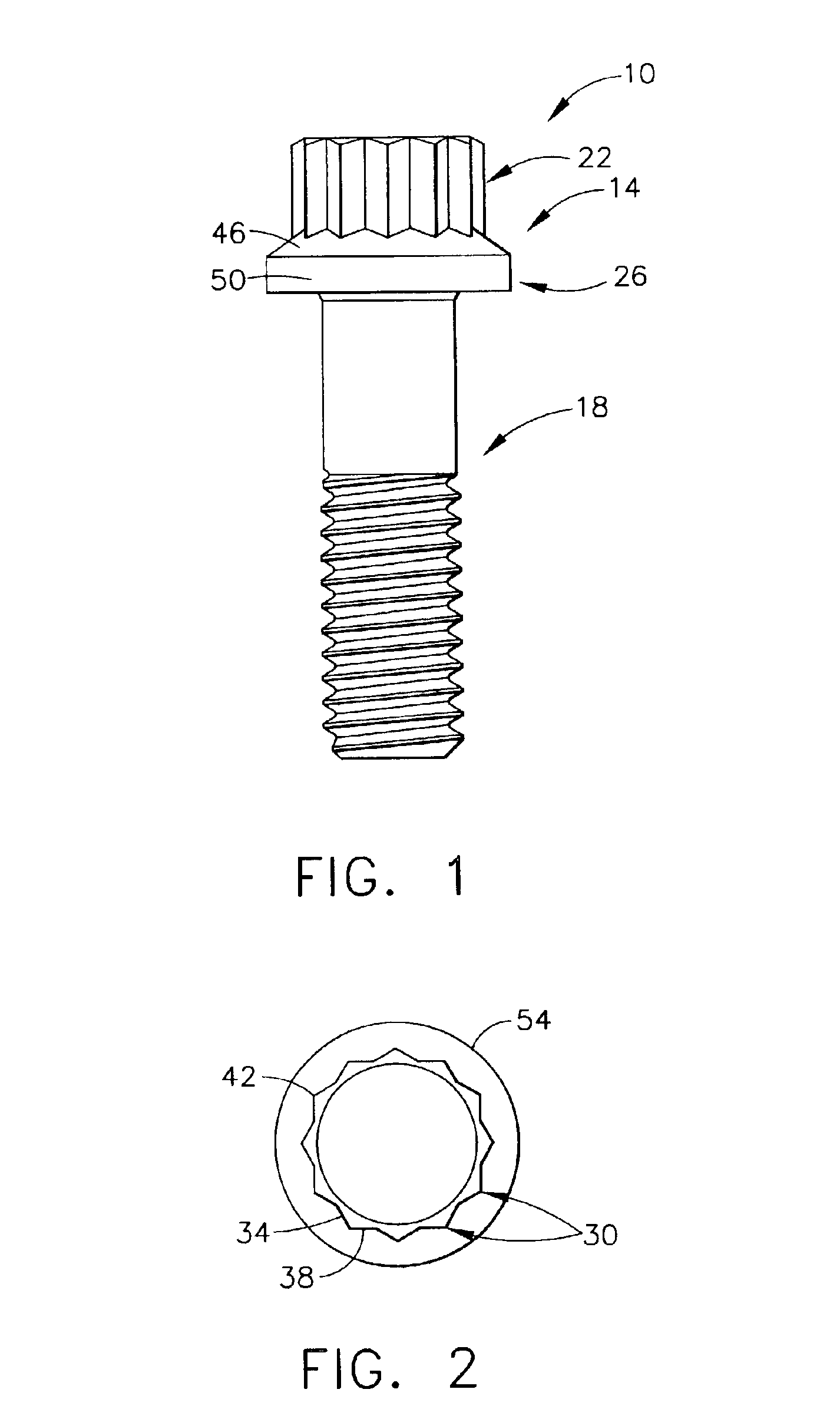Drive head and ECM method and tool for making same
a technology of drive head and ecm, which is applied in the direction of manufacturing tools, electrical-based machining electrodes, machining working media supply/regeneration, etc., can solve the problems of increasing the difficulty of fabricating drive head for bolts, affecting the ability to provide double hexagonal configuration, and reducing the strength or fatigue life of materials, so as to facilitate the supply of sufficient torque.
- Summary
- Abstract
- Description
- Claims
- Application Information
AI Technical Summary
Benefits of technology
Problems solved by technology
Method used
Image
Examples
Embodiment Construction
As used herein, the term “driveable article” refers to those articles that have a drive head and are generally twisted or rotated about a longitudinal axis by a tool (e.g., wrench) or other drive component. Driveable articles include fasteners such as bolts, or nuts, couplings such as curvic couplings, splines, gears, etc.
As used herein, the term “less malleable metal” refers to those metals that are difficult or impossible to shape or form by conventional bolt forging techniques. These harder, less malleable metals and metal alloys include powder metal nickel alloys comprising at least about 40% nickel (e.g., from about 40 to about 75%), more typically at least about 45% nickel (e.g., from about 45 to about 60%). These powder metal nickel alloys can also comprise at least about 5% cobalt (e.g., from about 5 to about 21%), more typically at least about 12% cobalt (e.g., from about 12 to about 14%) and at least about 10% chromium (e.g., from about 10 to about 22%), more typically at ...
PUM
| Property | Measurement | Unit |
|---|---|---|
| Fraction | aaaaa | aaaaa |
| Fraction | aaaaa | aaaaa |
| Fraction | aaaaa | aaaaa |
Abstract
Description
Claims
Application Information
 Login to View More
Login to View More - R&D
- Intellectual Property
- Life Sciences
- Materials
- Tech Scout
- Unparalleled Data Quality
- Higher Quality Content
- 60% Fewer Hallucinations
Browse by: Latest US Patents, China's latest patents, Technical Efficacy Thesaurus, Application Domain, Technology Topic, Popular Technical Reports.
© 2025 PatSnap. All rights reserved.Legal|Privacy policy|Modern Slavery Act Transparency Statement|Sitemap|About US| Contact US: help@patsnap.com



